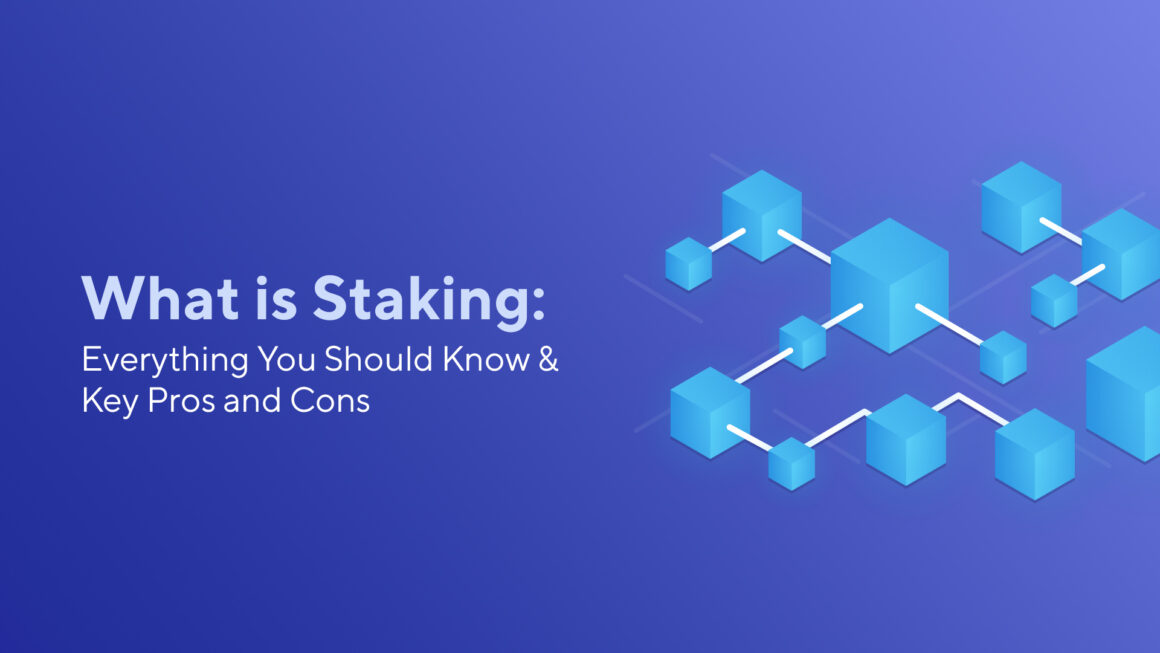Staking & Proof-of-Stake (PoS). These terms are quite common in the field of blockchain and cryptocurrencies. But what do they mean? Use of capital in the form of cryptocurrencies or coins — this is what staking is all about. However, it involves a certain risk, which in turn is remunerated with staking rewards.
Where do you use crypto coins? Staking or coin staking is an essential part of a proof-of-stake consensus mechanism. The coins are used in a PoS blockchain to support the network. And you will be rewarded for this kind of support.
This is a very simplified description. Let’s take a closer look!
Proof-of-Stake (PoS) Consensus Mechanism: What Should You Know About It
Great energy costs were the decisive factor in working on alternative consensus mechanisms. Back in 2012, Sunny King and Scott Nadal first mentioned a blockchain with a proof-of-stake consensus mechanism in a white paper.
Instead of well-known miners in the PoW system, so-called stakers in the PoS one are intended to act as validators that confirm new blocks. To do this, a staker must have a certain number of coins in his/her wallet. The selection of staker allowed to create the next block is made using a random algorithm, depending on the number of coins in a wallet. How long the coins have been in a wallet usually influences the choice as well. This means that a block is more likely to be created if there are more coins in a wallet.
In contrast to PoW, where proof of work has to be generated, in the PoS system you need to prove that you have a certain number of coins. In order to prove ownership, a wallet with coins must be constantly online. In some cases, the coins are also ‘locked-in’. That is, it’s almost impossible to access the coins during staking.
When participating in the PoS consensus mechanism, stakers — like miners in the PoW system — are rewarded with a distribution of coins. The amount of payout also depends on the number of staking participants. The more participants, the lower the staking rewards, the fewer participants, the higher the payout.
Proof-of-Stake Vs Proof-of-Work: Which One is Better
PoS should allow participation as a validator in the network to become ‘more democratic’, that is, even more decentralized. Everyone should be given the opportunity to participate if they have enough coins in a wallet. And that’s without investing in expensive hardware which only financially strong investors can afford.
While in PoW the proportion of computing capacity (hashing power) is decisive for finding a block, in PoS the proportion of coins in the overall network plays a decisive role in the creation of a block.
What Are the Key Pros of PoS?
-
- A lower entry barrier leads to a bigger amount of staking participants — which provides more decentralization and stability of the network;
-
- Less energy consumption — more environmental friendliness;
-
- Significantly higher scalability — transactions can be confirmed much faster;
-
- Greater security against attacks — more decentralization reduces the possibility that more than 50% of the coins will get into the wrong hands;
-
- A better basis for management — stakers can participate directly in the decision-making process for further developments via voting rights (delegated or on-chain).
Many disadvantages of the PoW consensus mechanism are eliminated by PoS. But PoS is also not perfect.
What Are the Key Cons of PoS?
-
- Depending on the protocol, coins are often kept locked away — you have no direct access;
-
- Since the proof of ownership must take place 24/7 online, the coins are always ‘visible’ in a hot wallet — increased risk of hacking;
-
- Depending on the protocol, misconduct in staking can be punished — for example, if you aren’t online 24/7, a sanction mechanism ensures that some of the blocked coins are no longer refunded;
-
- There is also a risk of network attacks on PoS system;
-
- The ‘Nothing-at-Stake’ problem hasn’t been finally solved yet;
-
- The promise of high staking rewards attracts a lot of scammers — before you take part in staking, you should have a good look at the respective blockchain project.
What other interesting facts about staking & Proof-of-Stake model do you know? Just share your thoughts in the comments!

Leave a Reply